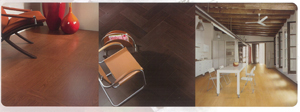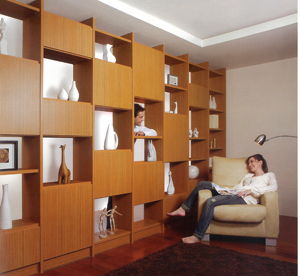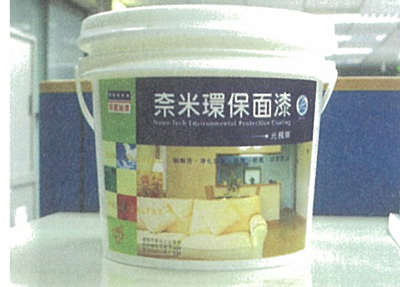Certified Green Building Material Suppliers Rise to 121 from Nil in Taiwan
Senior ERL engineer
2010/07/27 | By Ken LiuIt's debatable if official and private sector efforts over the past few years to enhance development of the island's green building materials industry is relevant to Taiwan's second-highest per-capita usage of cement globally, according to a study released by the Architecture and Building Research Institute of the Ministry of the Interior, but curbing carbon-dioxide and toxic emissions amid growing eco-concerns is virtually a prerequisite for a nation trying to promote itself as a developed economy, one that supposedly also cares about its social duties in the international community.
Taiwan raised the minimum of green building materials in structures from 5% to 30% on July 1, 2009, and pledged early this year to appropriate at least 10% or US$1.56 million of its annual public infrastructure budget for the development of green building materials and eco-friendly construction methodologies.
The above-mentioned study also notes that construction is energy-intensive, producing 28% of Taiwan's CO2 emissions.

Promising Potential
Unperturbed by reality, Chen promotes ecological, non-hazardous, high-performance, and recyclable building materials, estimating that eco-friendly materials have the potential to command around 4% or US$937 million of Taiwan's total building material market, valued at US$21.5 billion, in a few years.
The government demands builders to use, as much as possible, steel construction and bricks of scrapped, non-toxic cement blocks instead of steel rebar and virgin cement; while interior-decoration material providers are to use less energy-intensive, recyclable and toxic-free materials. Such requirements seem as effective as the honor method of fare-payment at MRT stations.

Such effort has pushed 57 of Taiwan's building-material manufacturers in 2008 to set up the trade body Taiwan Green Building Material Council (TGBMC) to promote eco-friendly building materials, composed of so far over 100 individual and corporate members, who vow to promote products labeled with the official “Green Building Label” introduced in 2004.
“We've seen more materials submitted for evaluation without being able to quote exact figures,” says W.H. Ming, CEO of the nonprofit Taiwan Architecture and Building Center (TABC). Four types of green building materials are classed: ecological, non-hazardous, high-performance and recycled. “They are qualified by the CNS (Chinese National Standards),” says W.C. Wang, manager of the center's environmental control division, adding about 70% of certified materials are non-hazardous for such issue is foremost on consumers' minds.


40 TGBMC-approved Members
Certified suppliers include the 40-some approved TGBMC members, such as Sanyeu Building Material Co., Taiwan's first lacquer manufacturer to be qualified. The company's chairman, D.C. Chen, who was elected TGBMC chairman early this year, says he plans to open one showroom each in northern, central, southern and eastern Taiwan to provide information on certified products and customer services; promote using green building materials; and invite influential manufacturers to join the Council. “The Council will do its utmost to phase out hazardous materials in Taiwan as has been done in most European nations, the United States and Japan; while making green materials will help boost export of Taiwan's building-materials sector,” he notes.
Plugging his company, Chen says Sanyeu's lacquer contains far fewer TVOCs than required by the green label system, as well as less lead and mercury than that required by the U.S. EPA.
G3 International Co., Ltd. also offers lacquers without formaldehyde, asbestos and other hazardous heavy metals, as well as being odorless, says Gordon Chih, sales specialist.
The company's catalog shows its unique, eco-friendly lacquer formula that achieves high durability, up to 30,000 cleanings, chemical corrosion, and two consecutive hours of 800C heating. And especially noteworthy for applications in humid situations is that the unique formula is bacteria-resistant: preventing staphylococcus aureus, escherichia coli, and klebsiella phumoniae as well as various moulds from growing on the surfaces painted with the lacquers.


Toxic-free Lacquer
The CareMilieu lacquer from BioSun Technology Co., Ltd., a joint venture between Prince Housing & Development Corp. and a Japanese company, is not only toxic-free but also stops 466 moulds, enabling the item to be labeled Green Building Materials as well as applied on the Taipei 101 tower.
Taiwan Order Furniture Corp. is the only furniture maker to have all its products labeled green in Taiwan, claims chairman Jackie Yang, also a former TGBMC chairman.
Citing his company as example to use green and energy-efficient building materials, Yang says, “We use German-made MFC or melamine faced chipboard made of only farmed not wildly grown trees, while tweaking manufacturing to limit waste within only 5% of output, compared with 20% at traditional manufacturers.” He continues, “Initially, CABC refused our application for we're not seen as building-material maker; but eventually we convinced them that MFC is also a building material. Plus they proved our products to be eco-friendly and material saving.”
Importing MFC boards from Germany some 10 years ago sparked eco-awareness in Yang's company, a sentiment that he was confident would trickle down to most consumers here. “After all, demand is a powerful force of attrition as over the past few years I've seen many disqualified manufacturers shutter their operations to move offshore,” he concludes.
Emulate Germany
Idealistically urging Taiwan to emulate Germany, Yang says Germany regulates material suppliers, not homebuilders to be green; so all German suppliers are eco-qualified and so are all buildings.
Germany and Japan, Yang says, boast the world's most advanced green building material technologies due to, surprisingly, being losers in World War II. Worn-torn Germany and Japan would have run short of reconstruction materials, so recycling proved necessity is the mother of invention.
PLCD Curtain
Chiefway Optronics Co., Ltd. applies optoelectronics technology to fabricating green building materials. The company's PLCD (passive liquid crystal display) film reduces incoming sun to cool interiors and hence UV radiation damage. Such film is applied on glazing in buildings to allow air conditioners to be set at higher temperatures, hence saving electricity, says Albert Pi, the vice president.
Pi boasts the PLCD film stops 99% of UV and around half of IR, the wavelength that is sensible heat, as well as being energy-efficient: each square meter consumes only two to three watts. However, a savvy consumer would compare per-square-meter installed cost of PLCD to other, low-tech options.
The Taiwan Glass Group also offers green low-emissivity (low-e) glass coated with metallic oxides, which is an invisible thin metal or metallic oxide layer deposited directly on the surface of one or more of the panes of glass, to capture sunlight in winter time to keep indoors warm and filter out radiation in summer time to keep cool, thereby saving electricity used by air conditioners and heaters.
Expansion Justified
Having invested boldly US$200 million to increase output of such low-emissivity glass in Taiwan and China, the company vows to lead supplying the glass in Greater China. Group president and managing director P.S. Lin justifies the output expansion based on the bright prospect of China's green building materials market, valued at US$73.5 billion. “China now stipulates glass curtains on buildings to be energy-saving or will refuse building and move-in permits,” Lin notes.
Hsin I Cheng Ceramic Ltd. recently launched solar roof tiles to meet demand for green materials. Sales manager W.J. Lin says solar panels are installed on traditional roof tiles to turn them into solar tiles. Such tiles are especially suitable for existing homes with traditional roof tiles to reduce power usage by tapping free solar energy,” he stresses, and adds that saturated market of conventional tiles pushed the firm to explore new segments.
.
Conceding cost to be a downside, Lin says, “Demand for such tiles in Taiwan is modest, and unsurprisingly, mainly comes from top-end consumers in the so-called ‘M' society.” But Lin remains confident, believing the market will take off soon when energy-efficiency becomes urgent enough to force change.
Universal Cement Corp., a major cement maker in Taiwan, has gypsum panels labeled Green Building Materials that have been installed on ceilings and as room partitions. Company spokesman T.Y. Ho stresses that gypsum panels are widely accepted as eco-friendly for being toxic-free in Europe, the United States and Japan, with no asbestos, VOCs and formaldehyde added in manufacturing.
The company has added fire-proof and humidity-proof capabilities to the panels, winning it the contracts to supply the building material to the Taipei 101 Tower, Mandarin Oriental Hotel (Taipei), a Chimei Innolux Corp. factory, Times Bus Terminal of Taipei City, and Taipei Bus Station.
Misinformed
Countering misinformation that gypsum panels contain toxic substances, Ho says Taiwan's builders mistakenly choose calcium-silicate sheets, bricks and cement over gypsum panels to partition rooms, adding that gypsum is also known for good soundproofing and shockproof.
Tile maker Romaston Co., Ltd., reportedly the world's No.2 supplier of artificial marble, has introduced silicate-based marble tiles by mixing recycled marble, glass and optical lenses, with such green tile resisting acid and alkali, being harder than conventional tiles, and easy to make.
Liang Haw Technology Co., Ltd. is promoting PE foam sheets built with electronic crosslink technology. According to Johnny Chang, a sales rep, the technology is non-toxic and uses PE foam, also noting Taiwan has long depended on Japan for foam due to a shortage of homegrown technology. Local manufacturers used to make foam sheets with crosslink fluid, which is poisonous.
Chang reports that his company exceeds South Korean manufacturers and equals Japanese technology. Despite being higher retail-priced than traditional counterparts, the non-toxic foam sheets, have piqued rising interest among buyers, says Chang.




